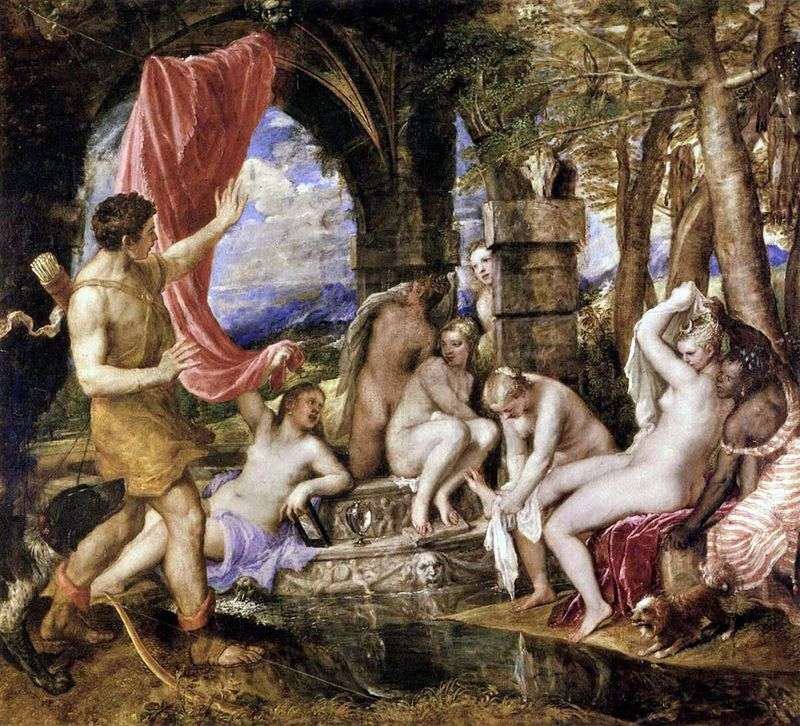
The painting by artist Tiziano Vecellio “Diana and Actaeon” is a steam room to the painting “Diana and Callisto” from a series of paintings on poetic themes for the Spanish king, 1553-1562. The size of the picture is 190 x 207 cm, canvas, oil. Customer – Philip II of Spain. Diana, in Roman mythology, the goddess of nature and hunting, was considered the personification of the moon, as her brother Apollo was identified with the sun during the late Roman antiquity.
Diana was accompanied by the epithet “goddess of three roads”, interpreted as a sign of Diana’s triple power: in heaven, on earth and underground. The goddess was also known as the patroness of captives of Rome, Latins, plebeians and slaves. The anniversary of the foundation of the temple of Diana on Aventine, one of the seven Roman hills, was considered their holiday, which provided the goddess popularity among the lower classes.
With this temple is associated with the legend of an unusual cow: it was predicted that he who sacrifices her to the goddess in the sanctuary on Aventine, will ensure his city power over all of Italy. When King Servius Tullius learned of the prediction, he cunningly took possession of the cow, brought the animal to the sacrifice of Diana and decorated the temple with its horns. Diana was identified with the Greek Artemis and the goddess of darkness and sorcery of Hecate.
With Diana is connected the myth of the unfortunate hunter Actaeon. A young man who saw a bathing beautiful goddess, Artemis – Diana in anger turned into a deer, which was torn by their own dogs. Titian wrote in sweeping strokes and did not attach a decisive meaning to the outline and perspective. Titian’s paintings are so built in color that “you can not look at them close and only from a distance they seem to be finished.”
Gamma paintings by the Italian master are always in golden colors, the volumes are spelled out very gently. In mature years the artist again pays much attention to color, his manner becomes even more free, he uses a fractional smear, achieving a sense of vibration on the surface of the paintings. His manner of writing figures, as if melting in the air, is characterized by great drama and light effects. Titian’s paintings are characterized by the finest color chromaticity, free letter with open smear, powerful color sound.
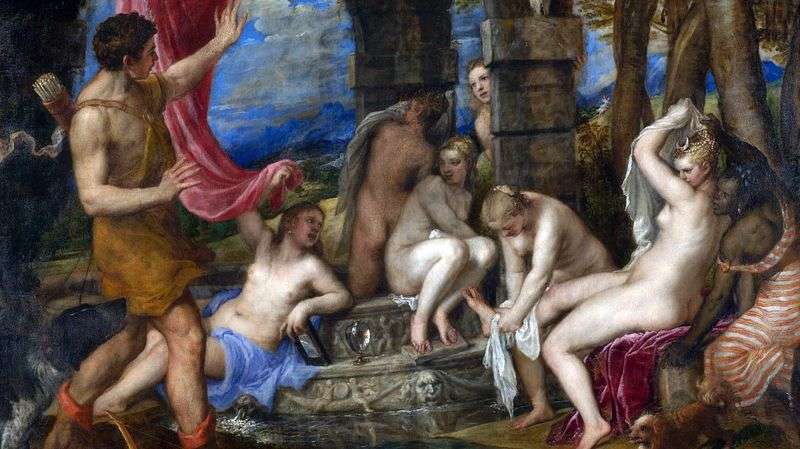 Diane and Actaeon by Bartholomeus Spranger
Diane and Actaeon by Bartholomeus Spranger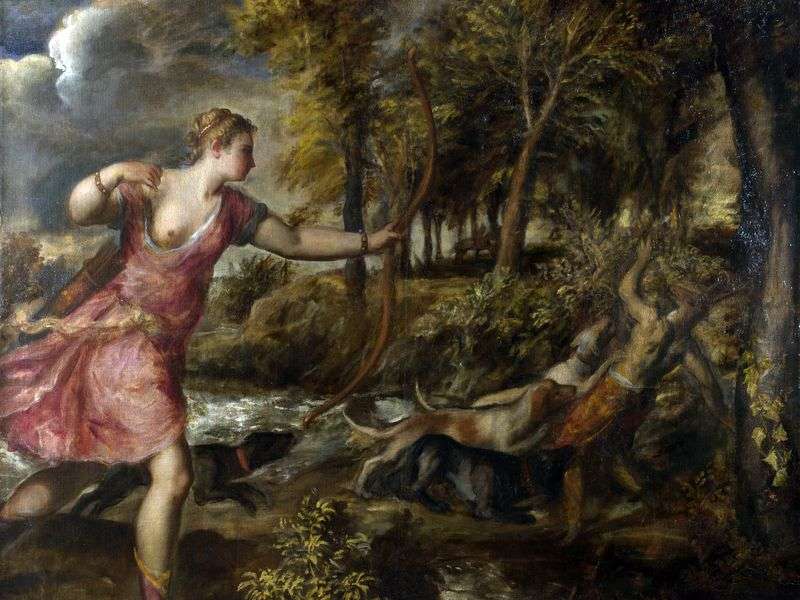 Death of Actaeon by Titian Vecellio
Death of Actaeon by Titian Vecellio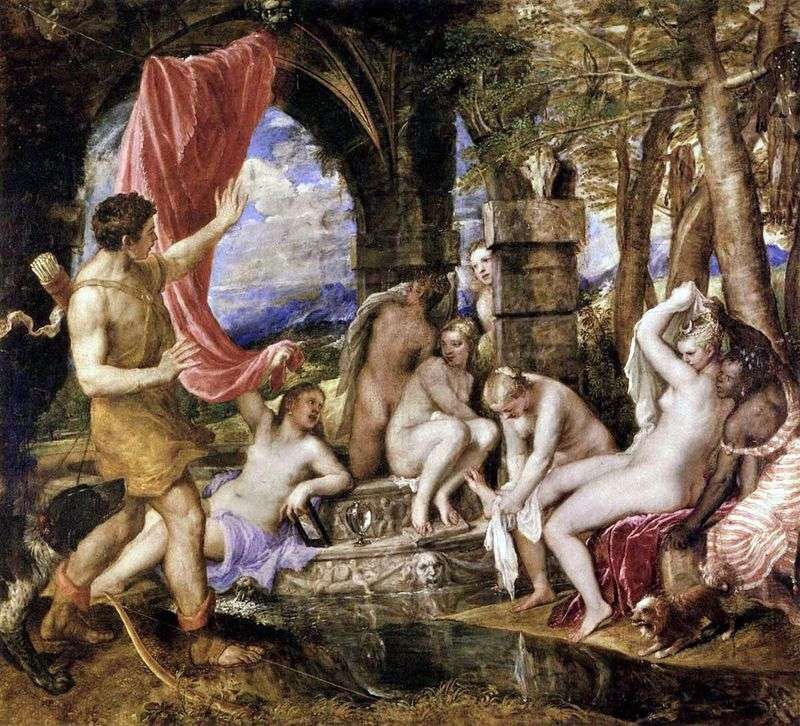 Actaeon, spying on the bathing of Diana by Titian Vecellio
Actaeon, spying on the bathing of Diana by Titian Vecellio Diana and Cupid by Pompeo Batoni
Diana and Cupid by Pompeo Batoni Venus with a mirror by Titian Vecellio
Venus with a mirror by Titian Vecellio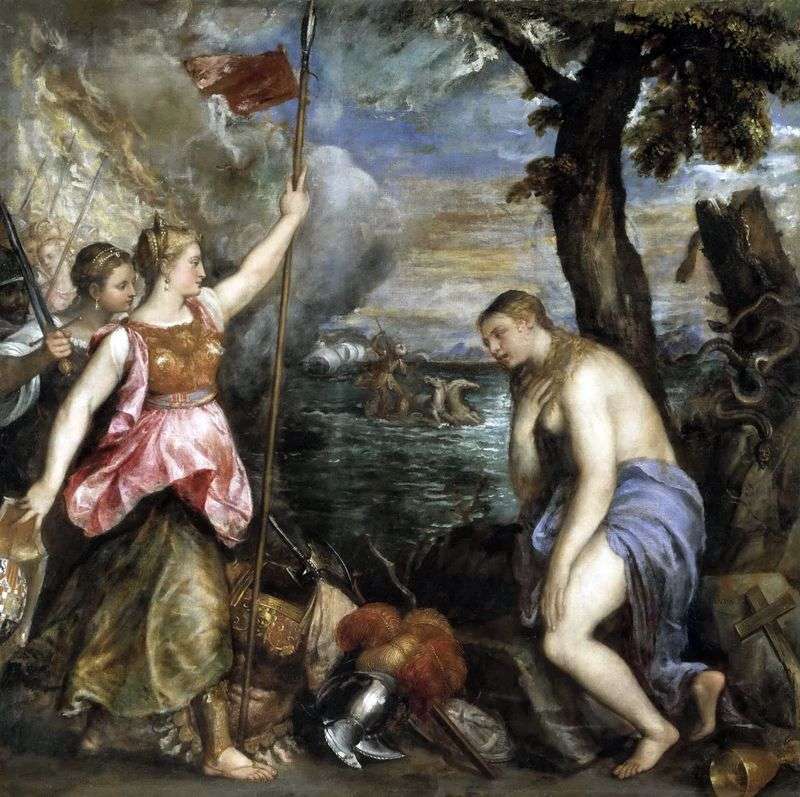 Religion, which helps Spain by Titian Vecellio
Religion, which helps Spain by Titian Vecellio Venus of Urbino by Titian Vecellio
Venus of Urbino by Titian Vecellio Diana, Endymon and Satyr by Karl Bryullov
Diana, Endymon and Satyr by Karl Bryullov